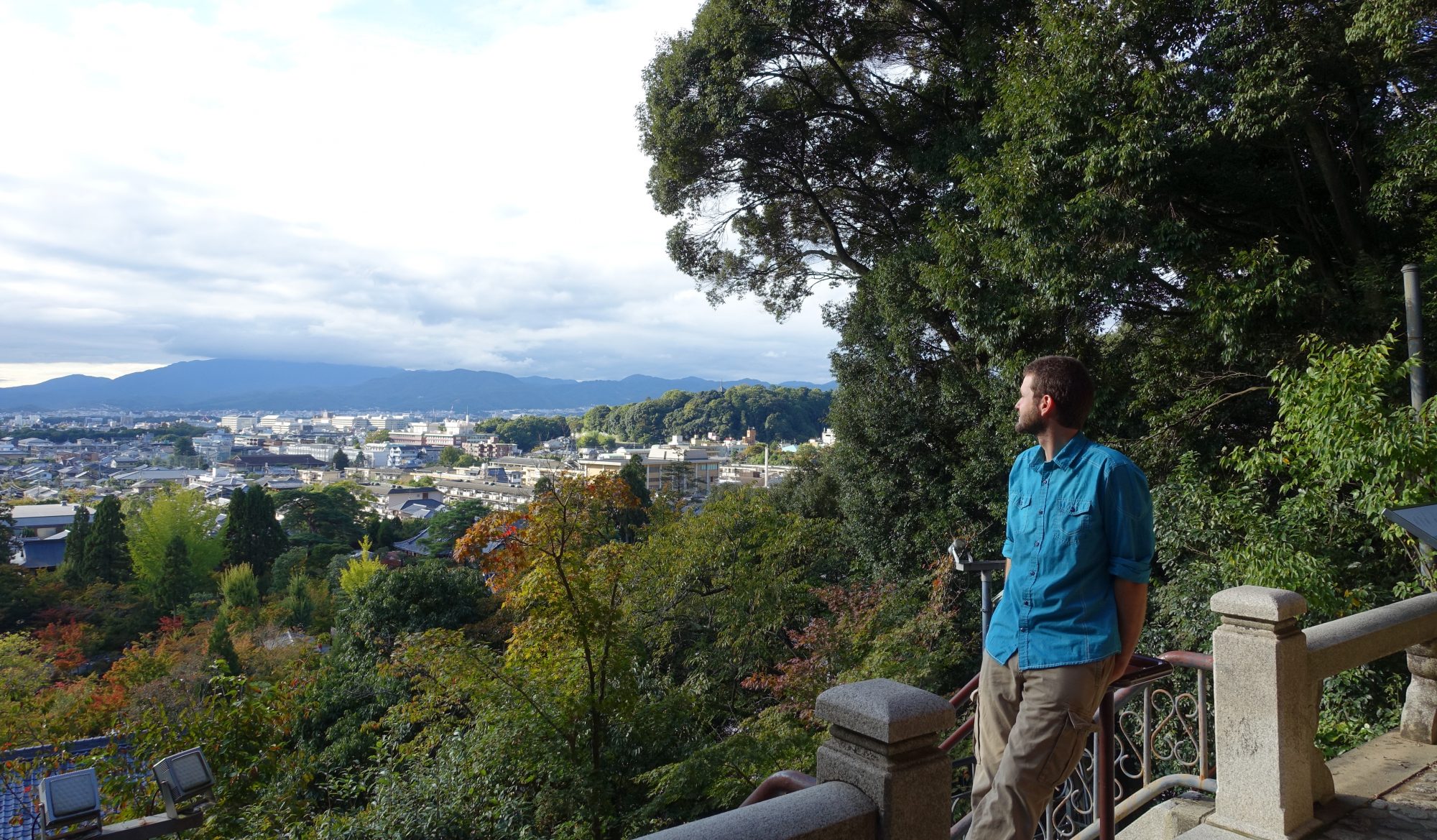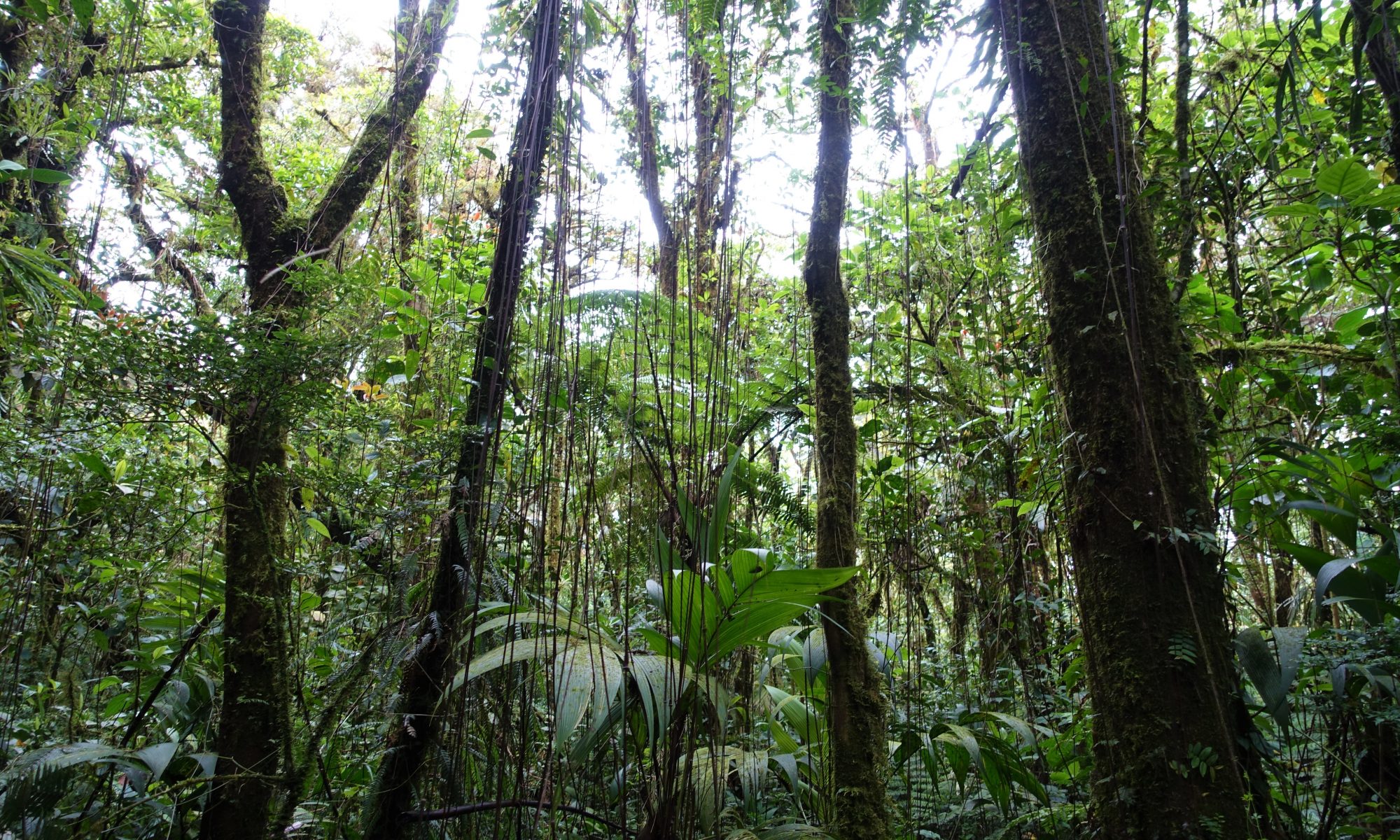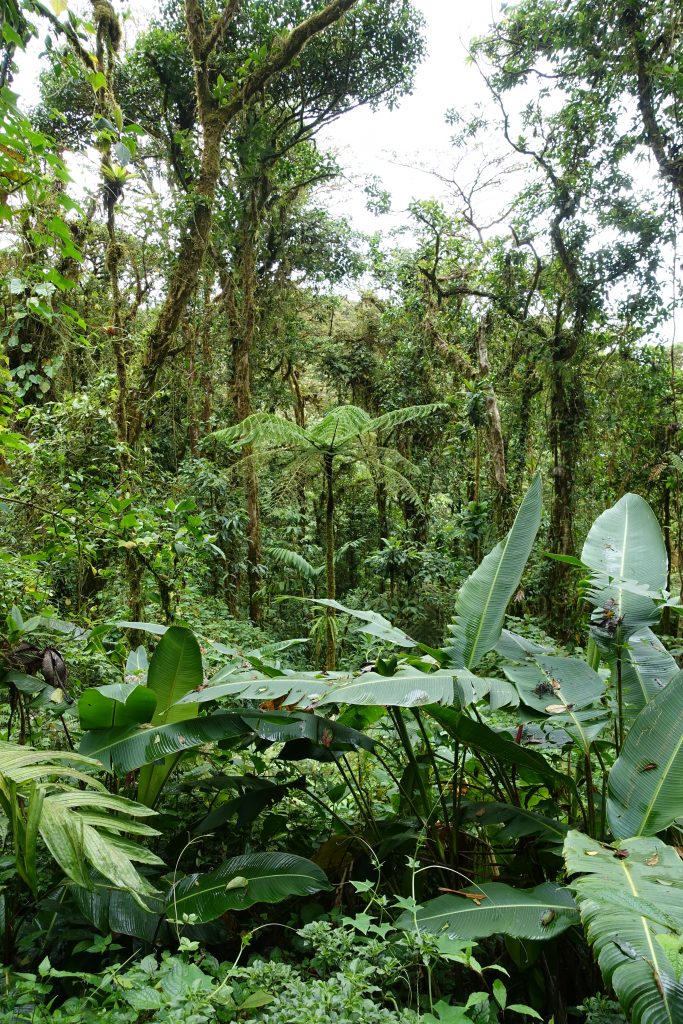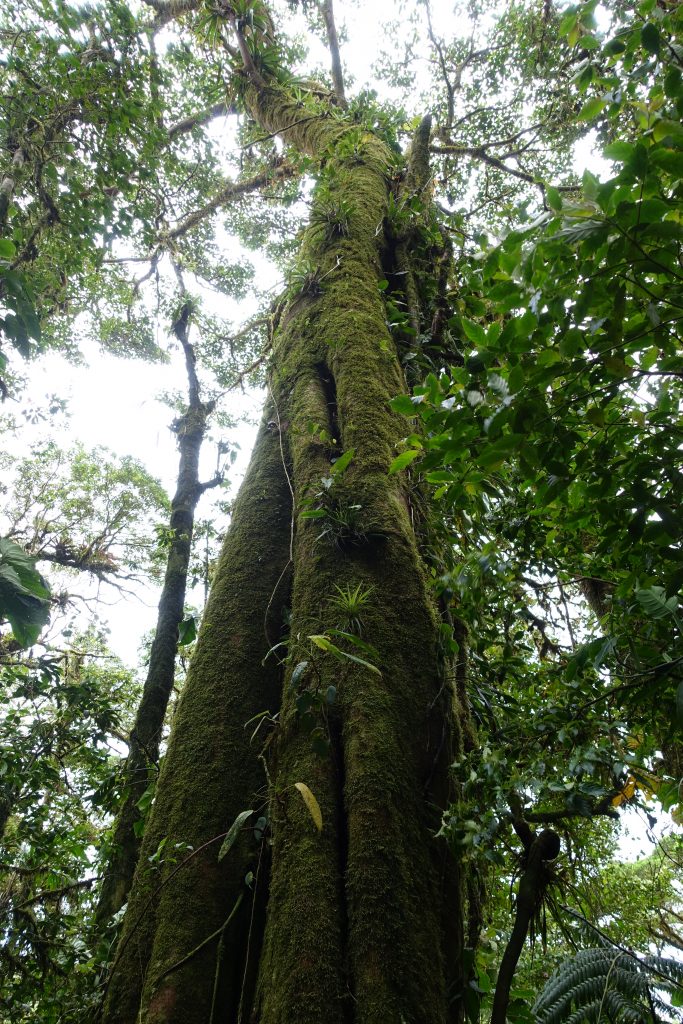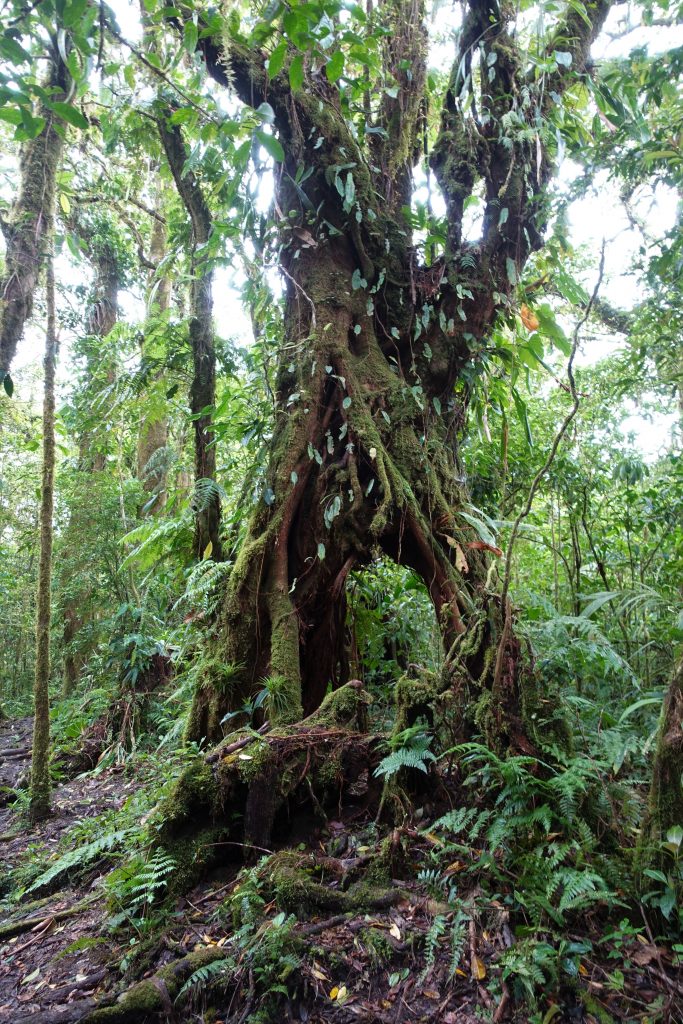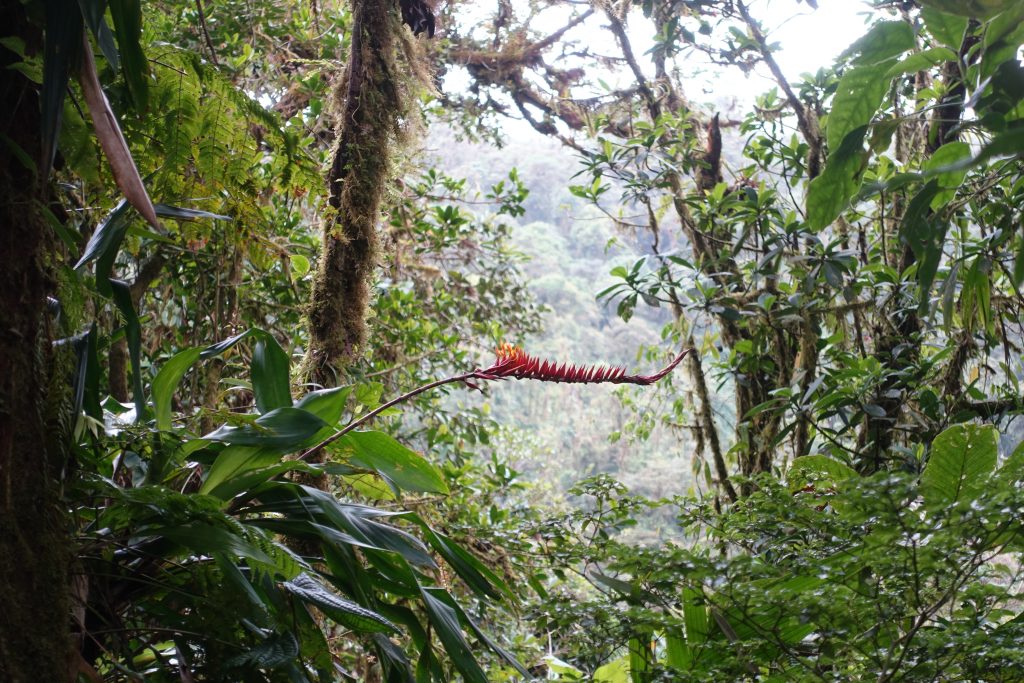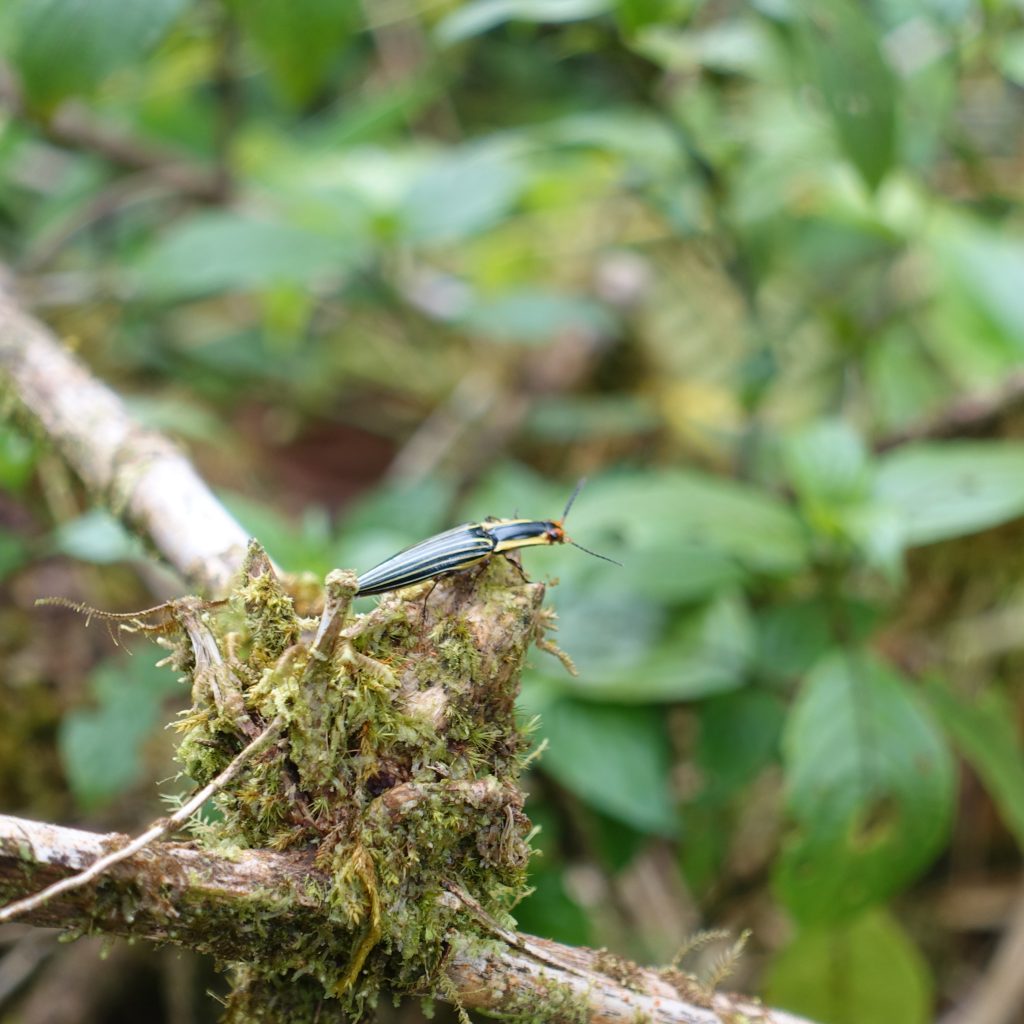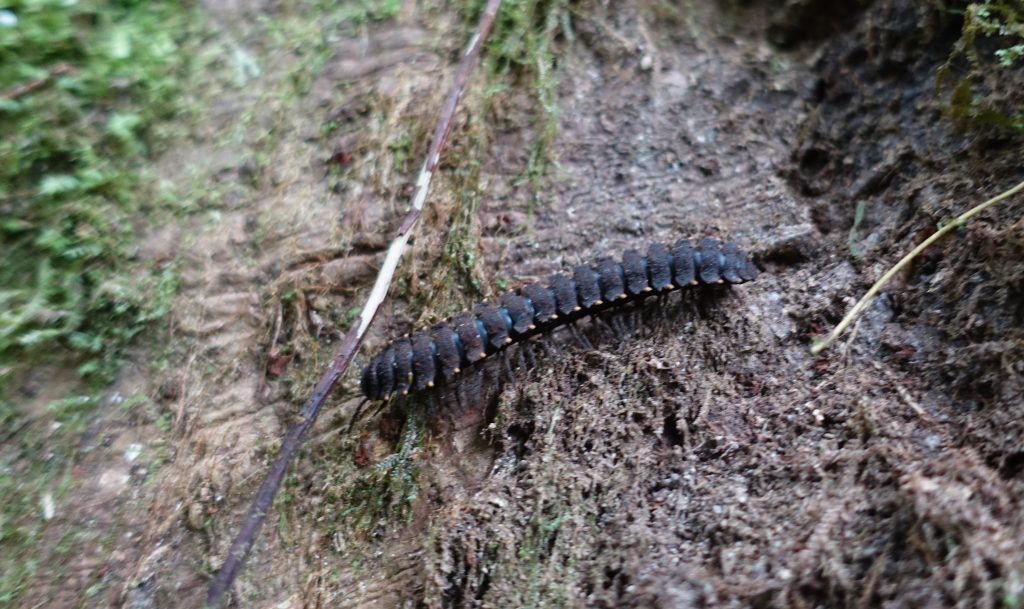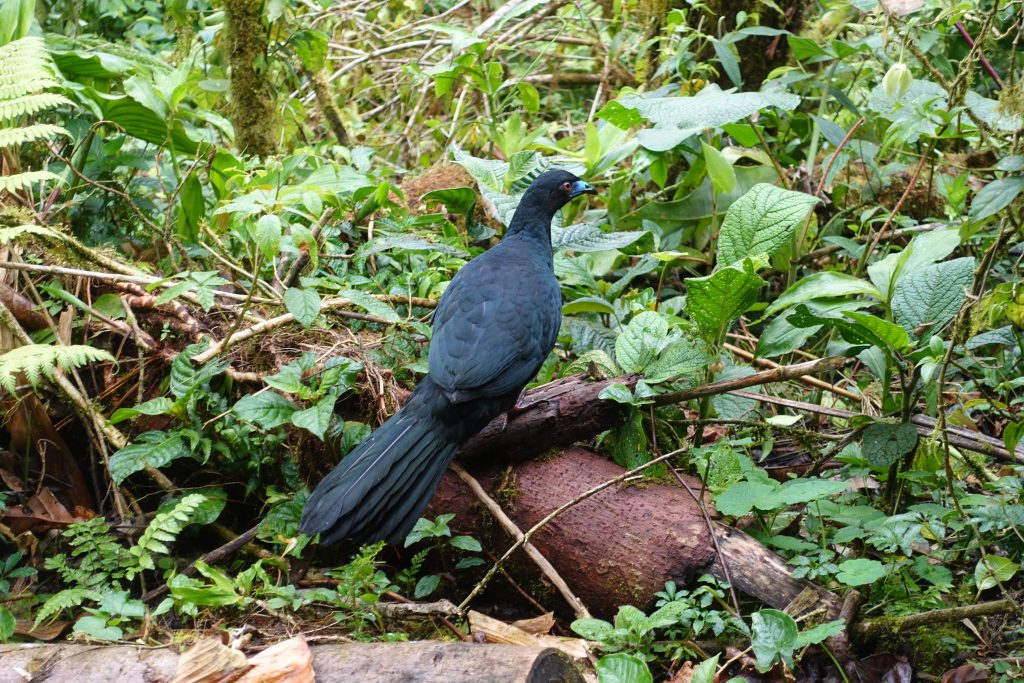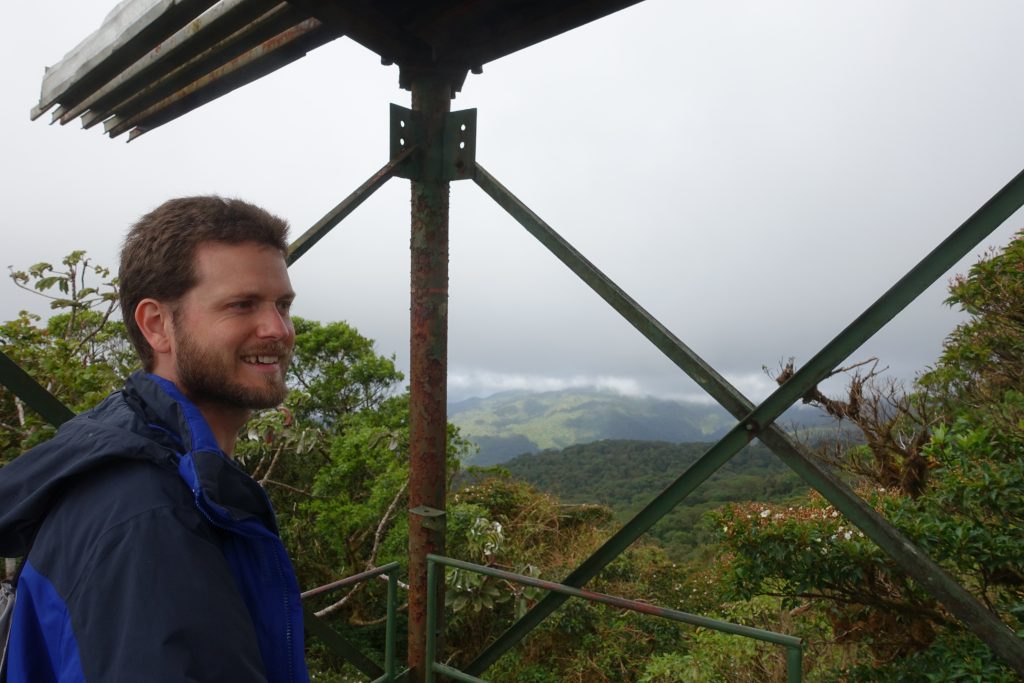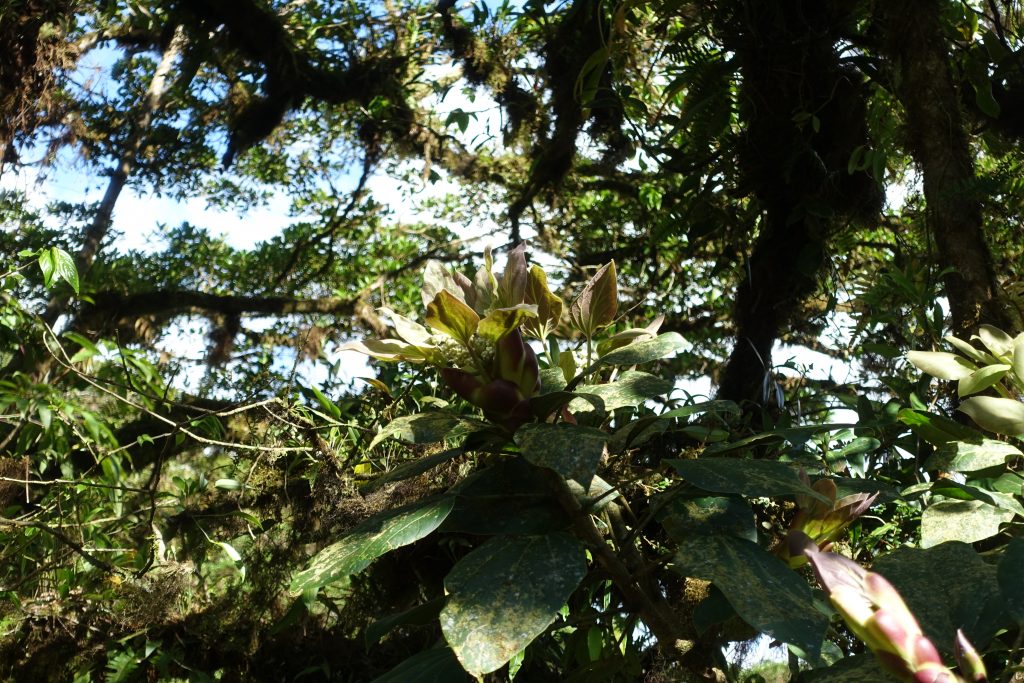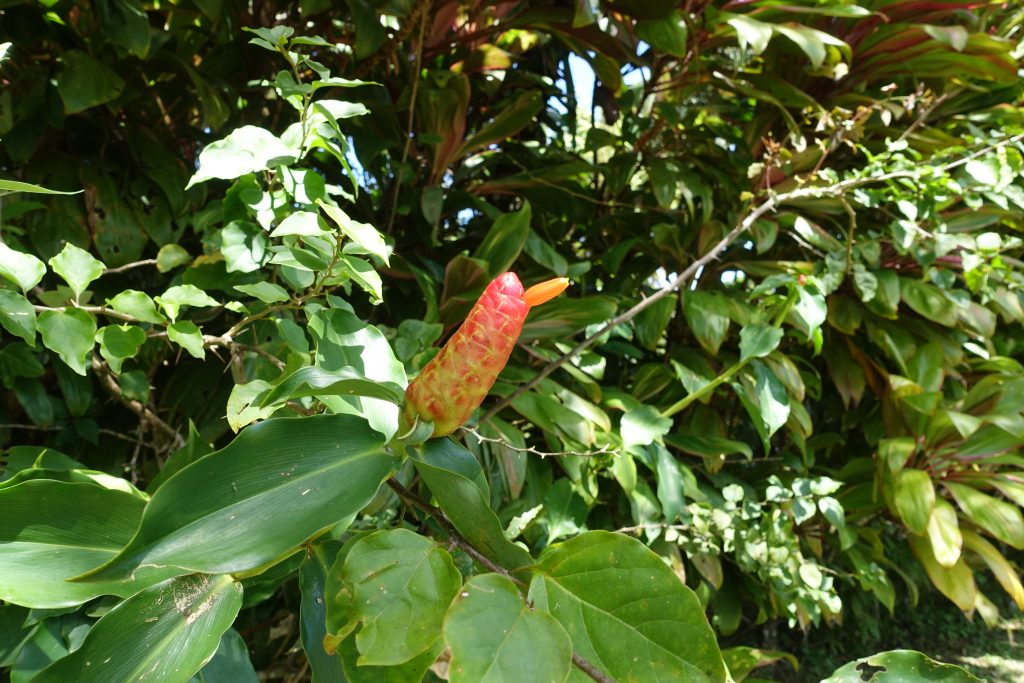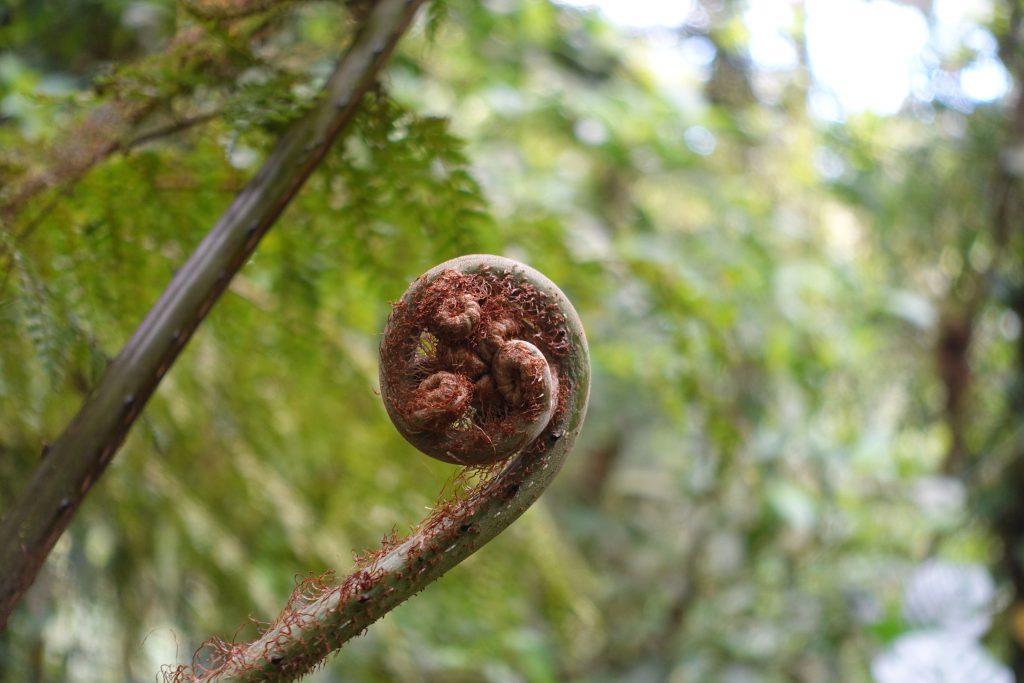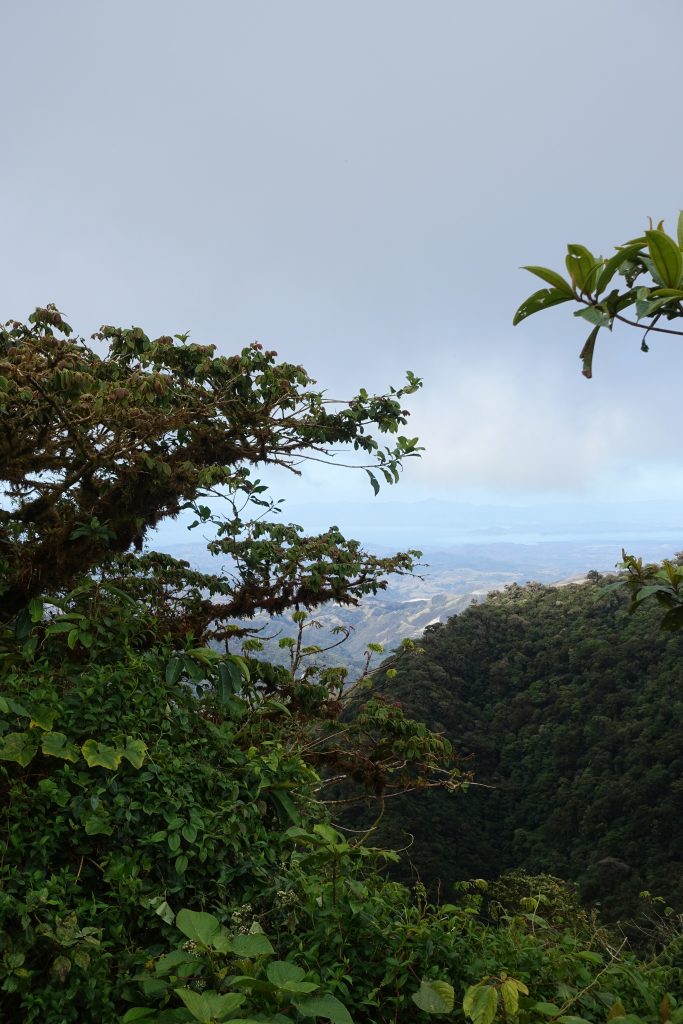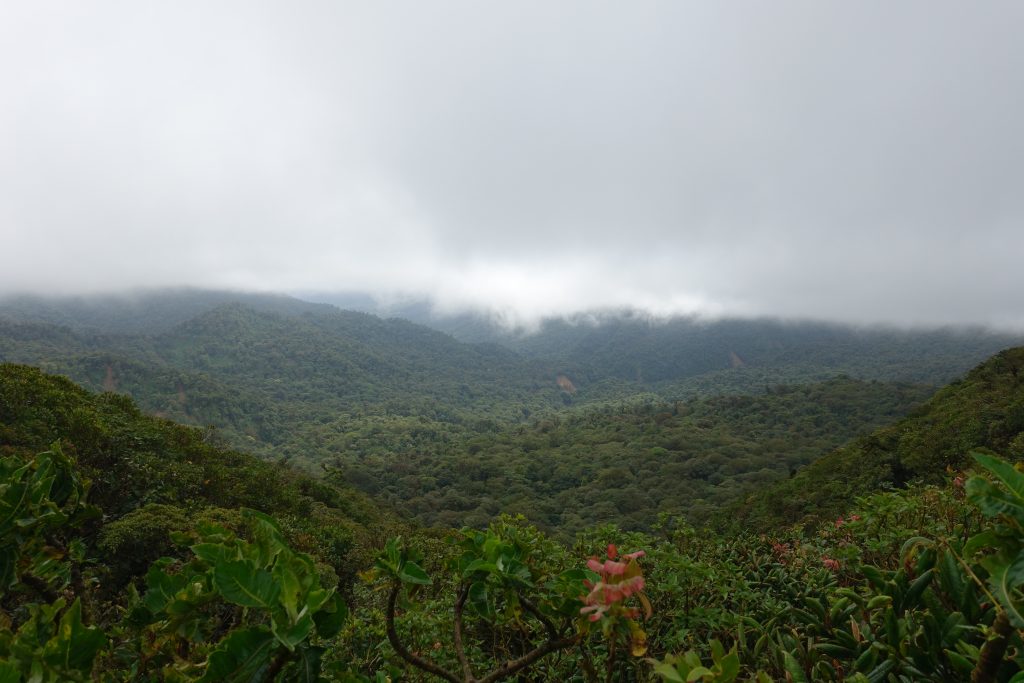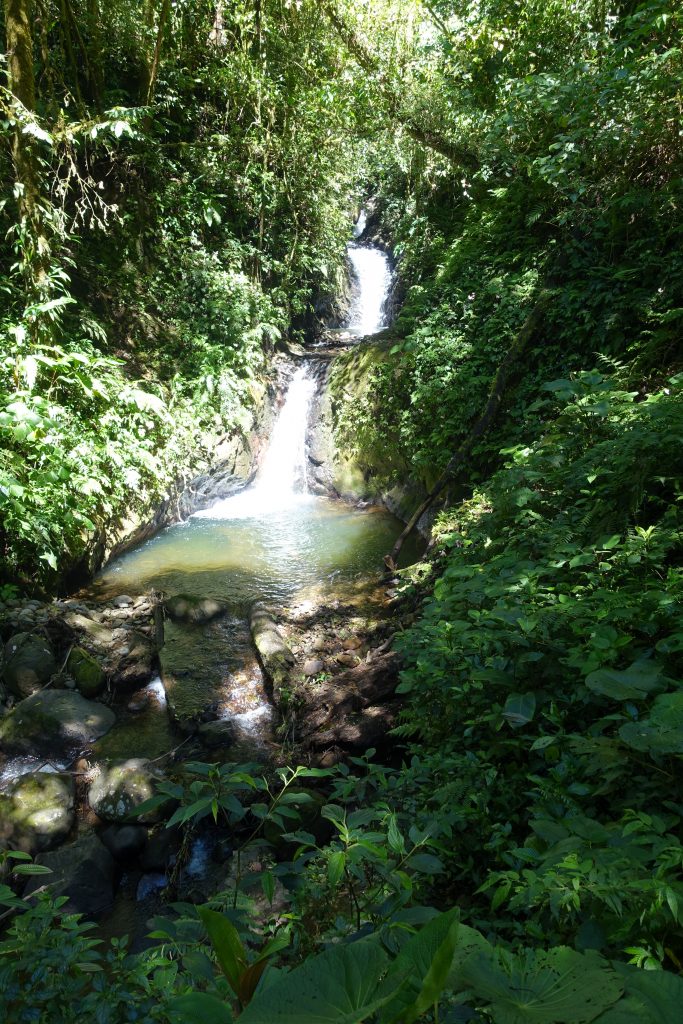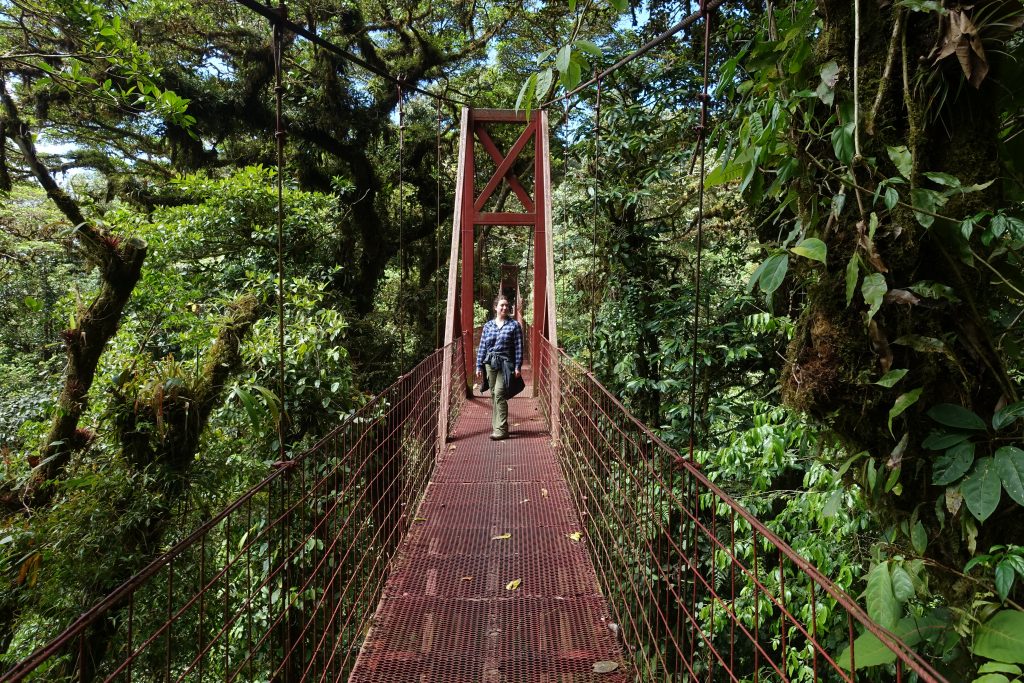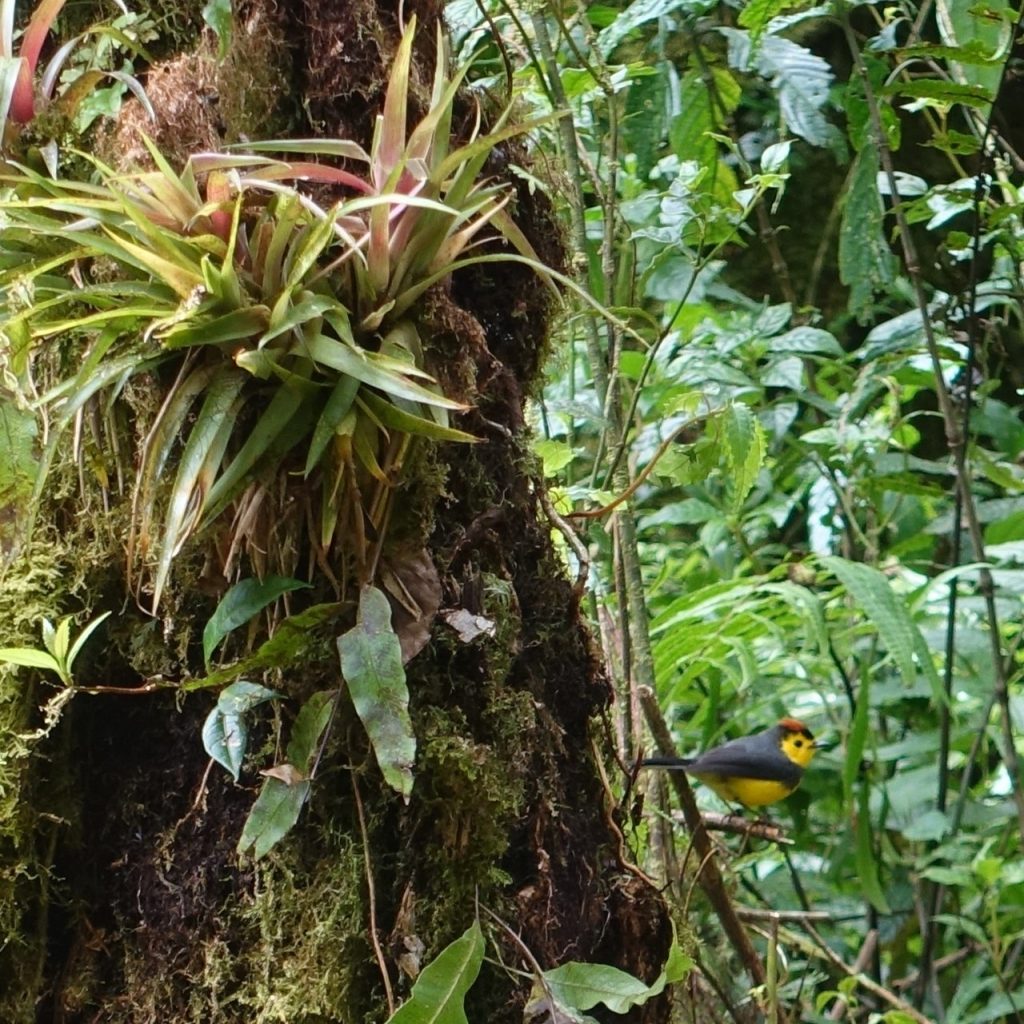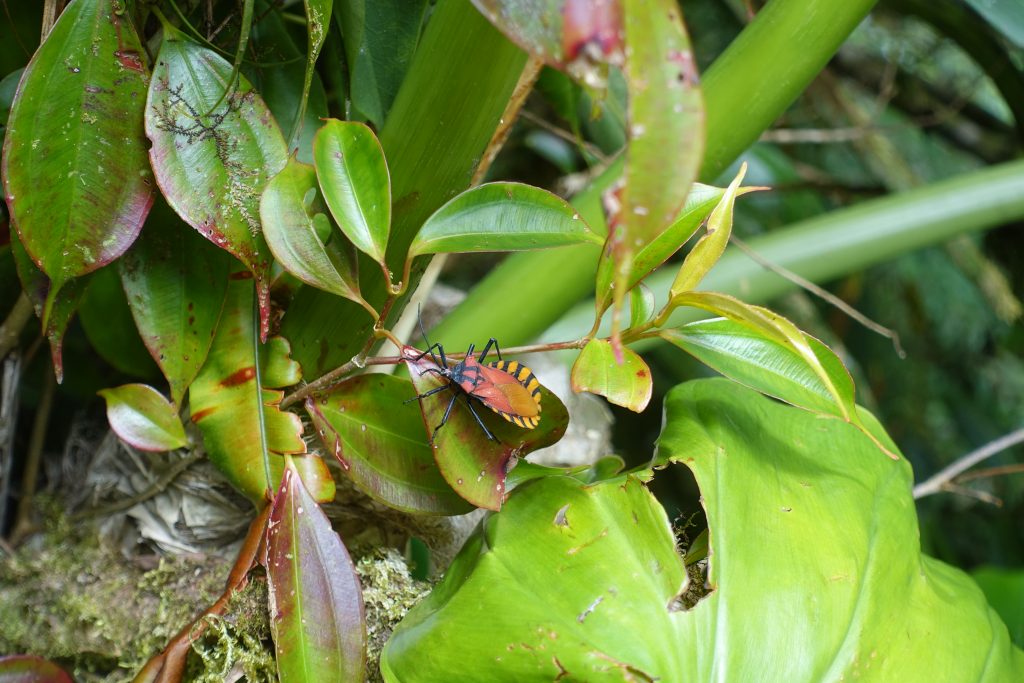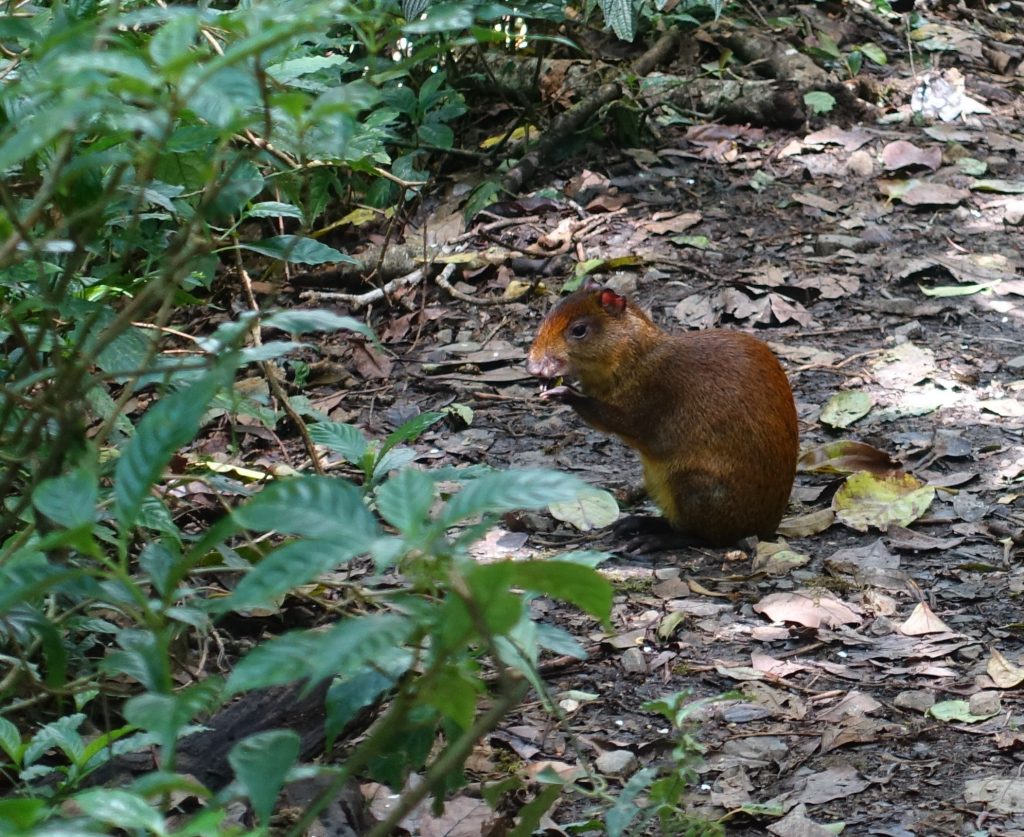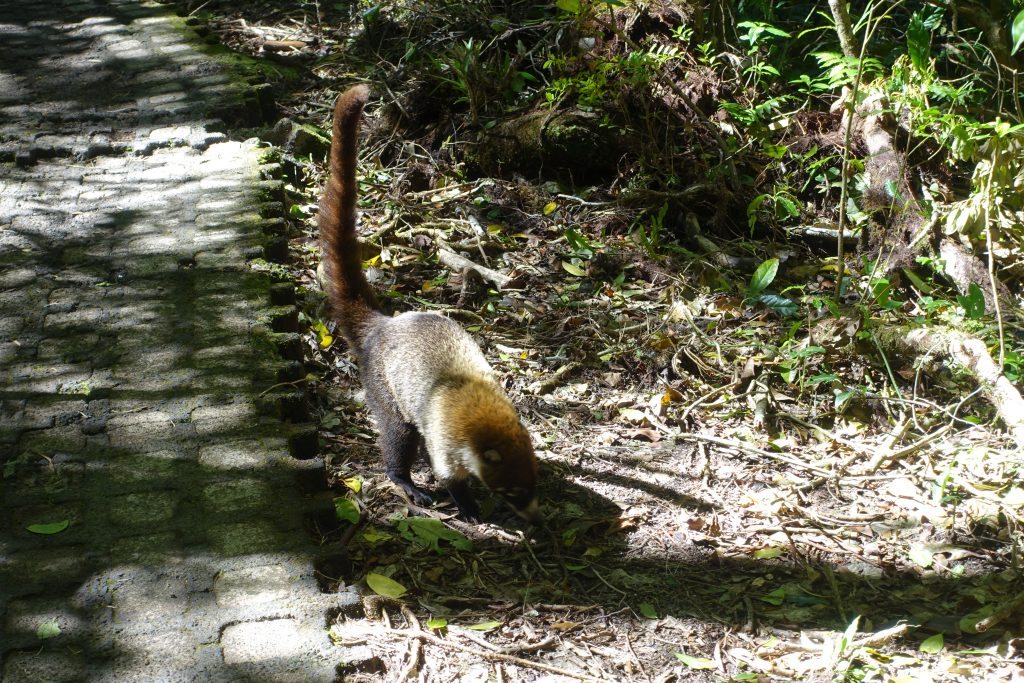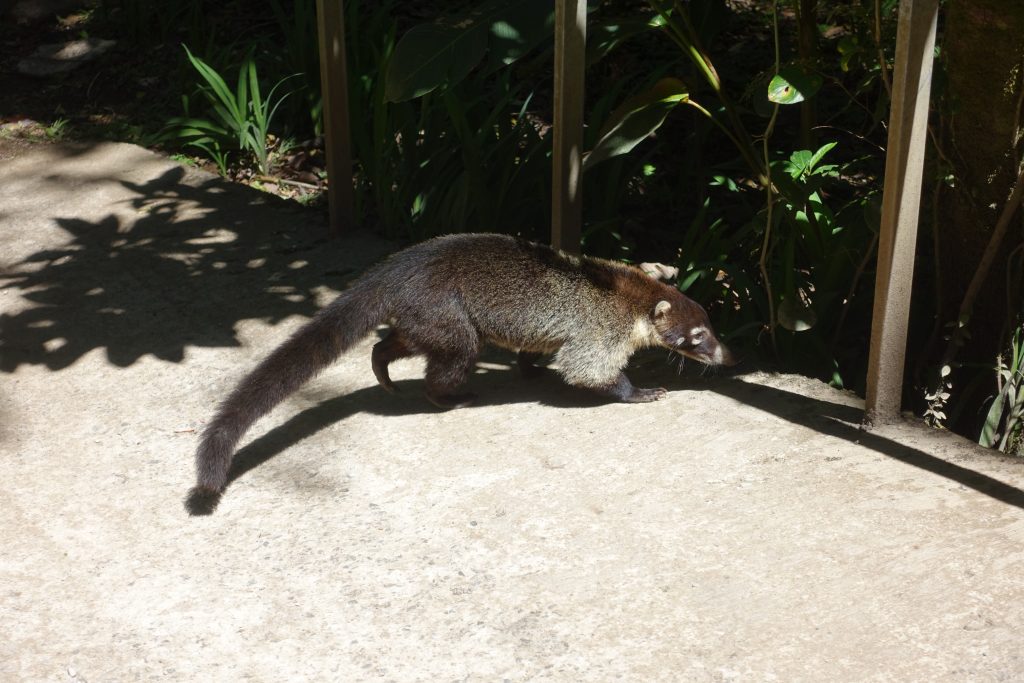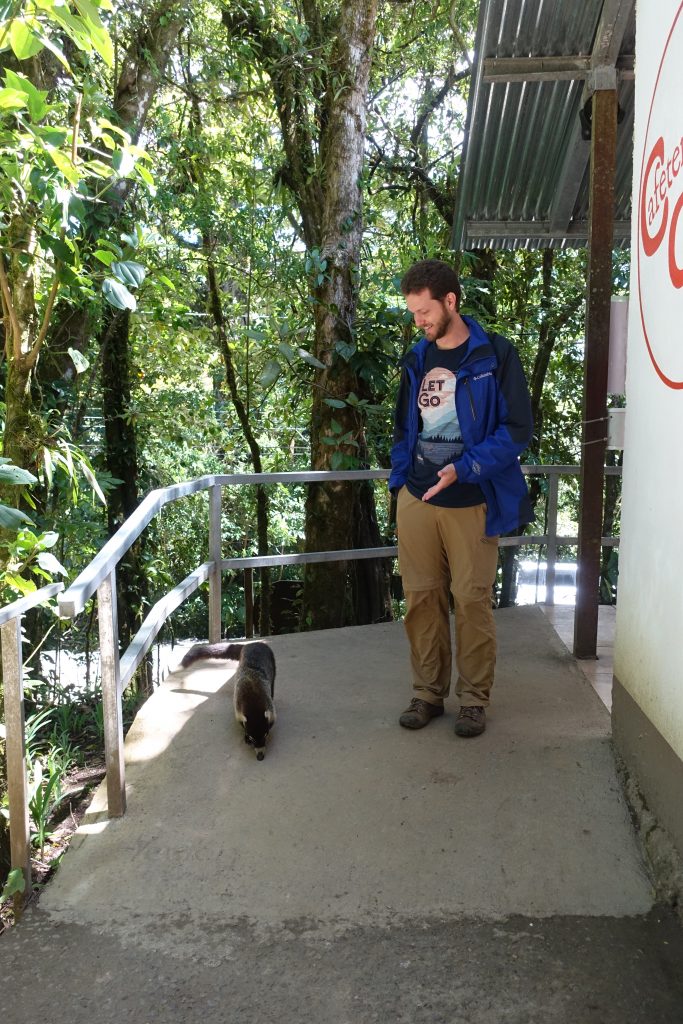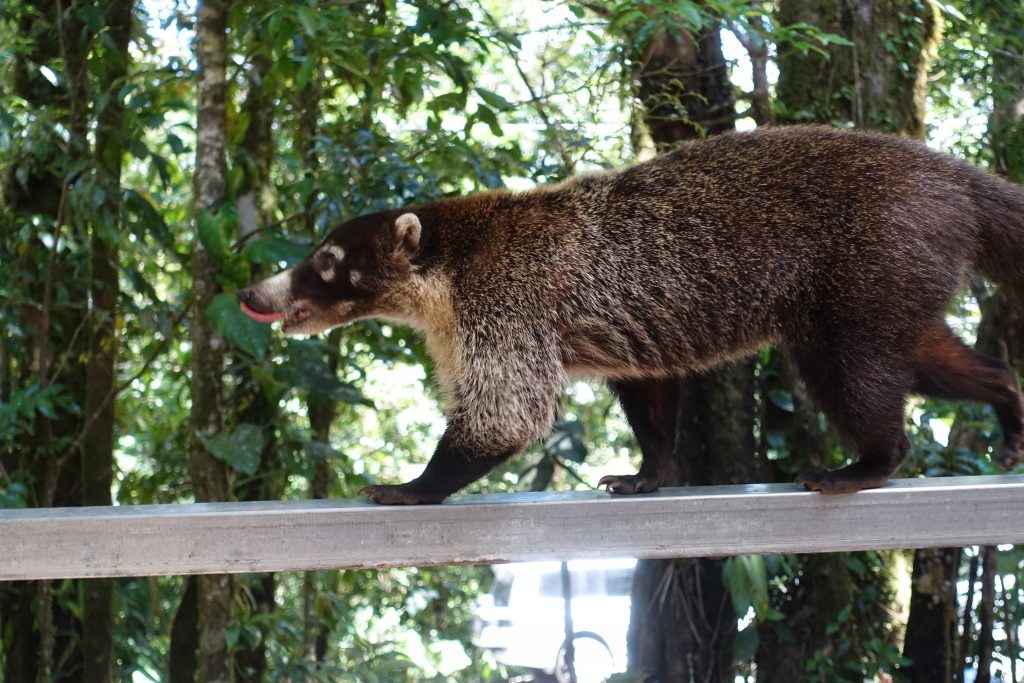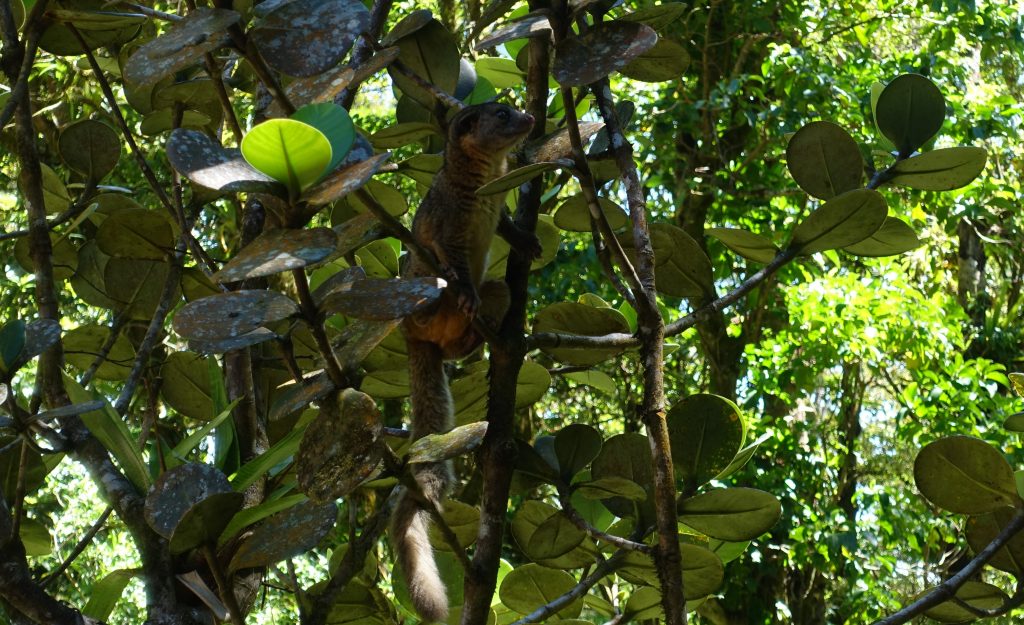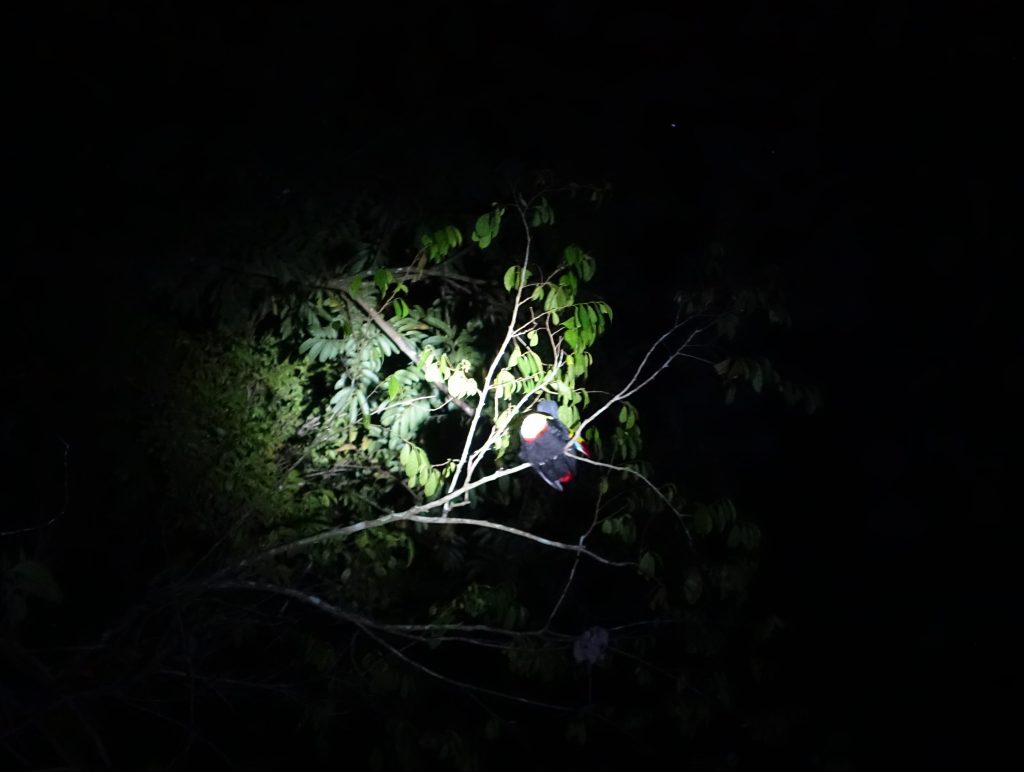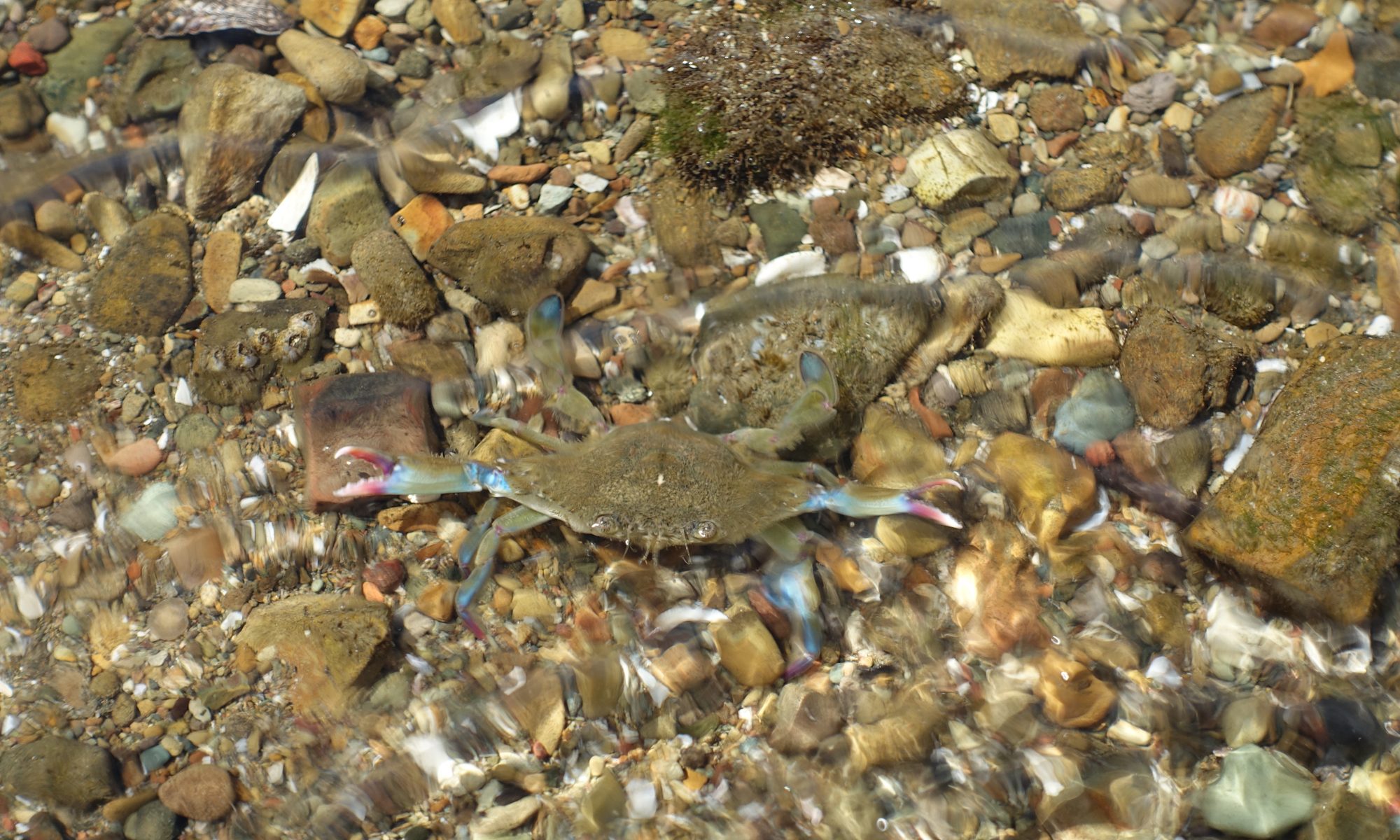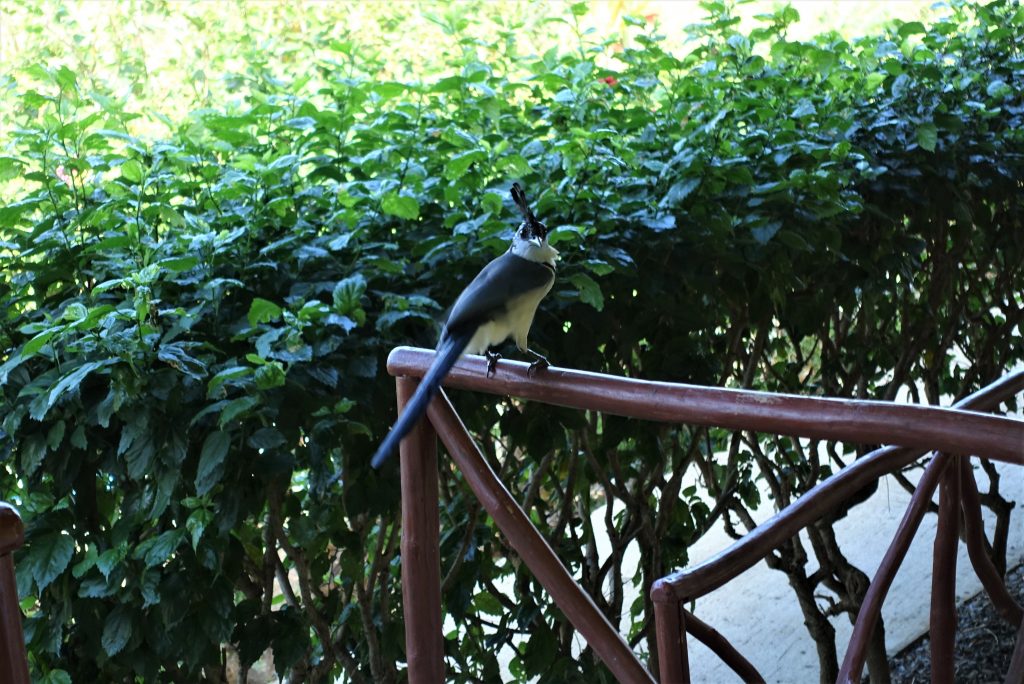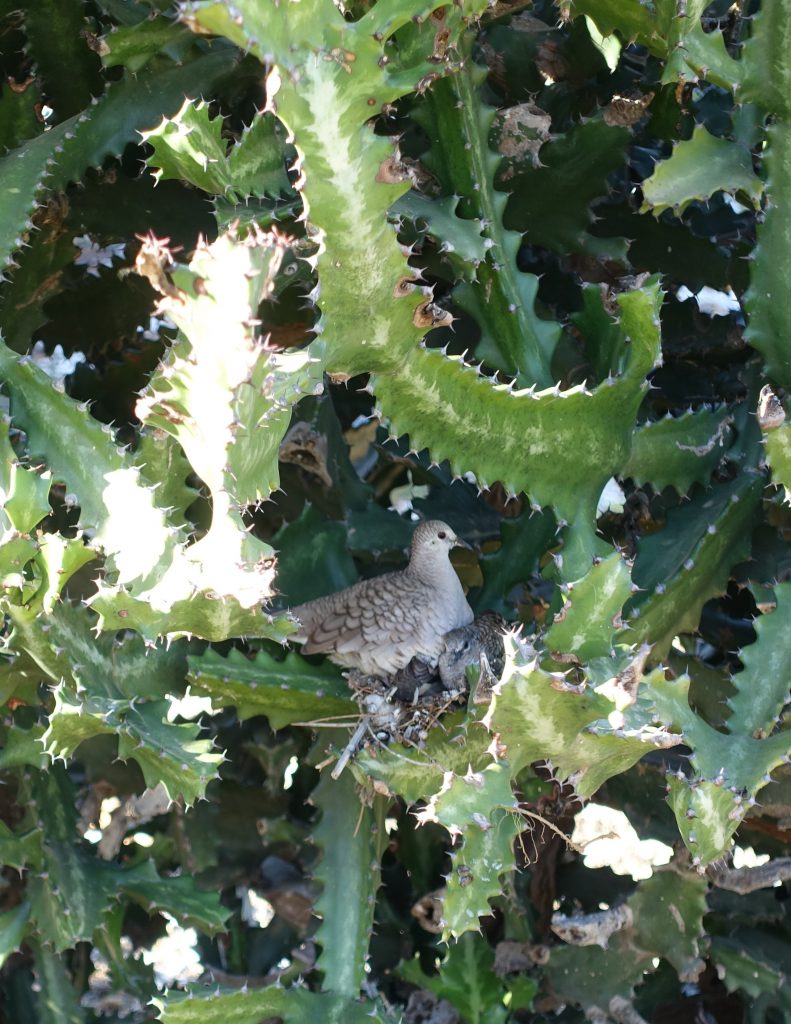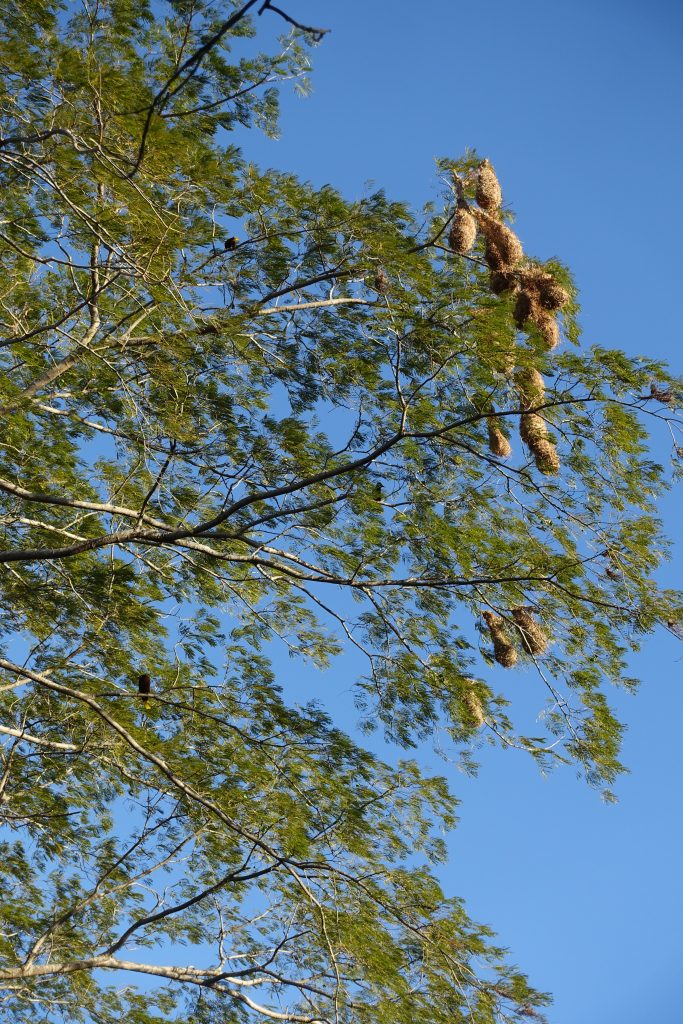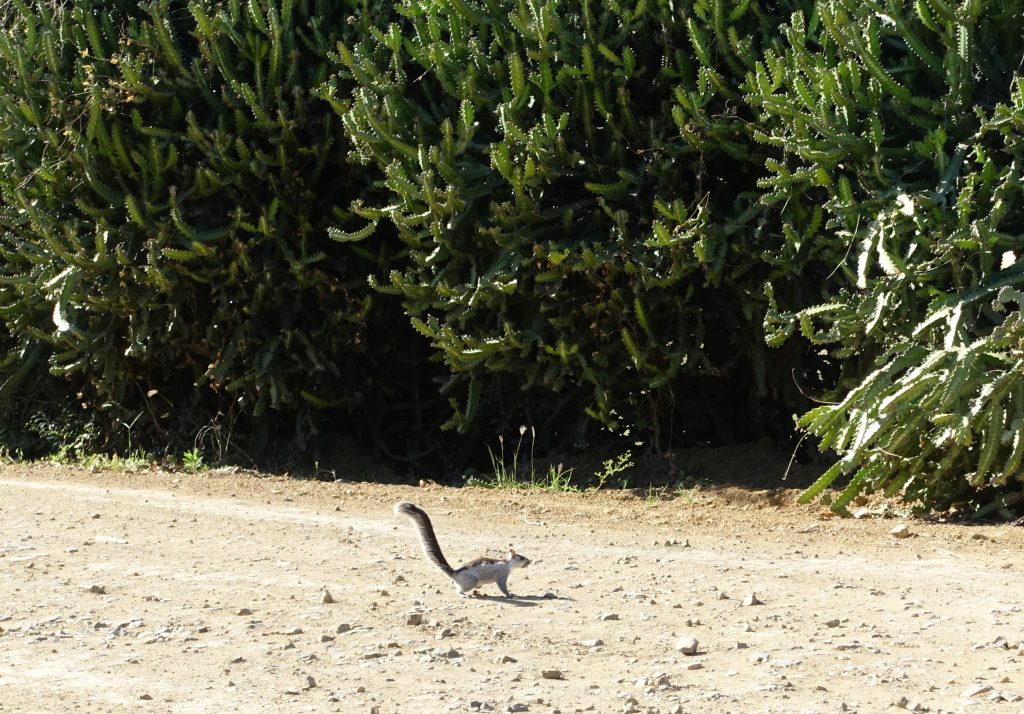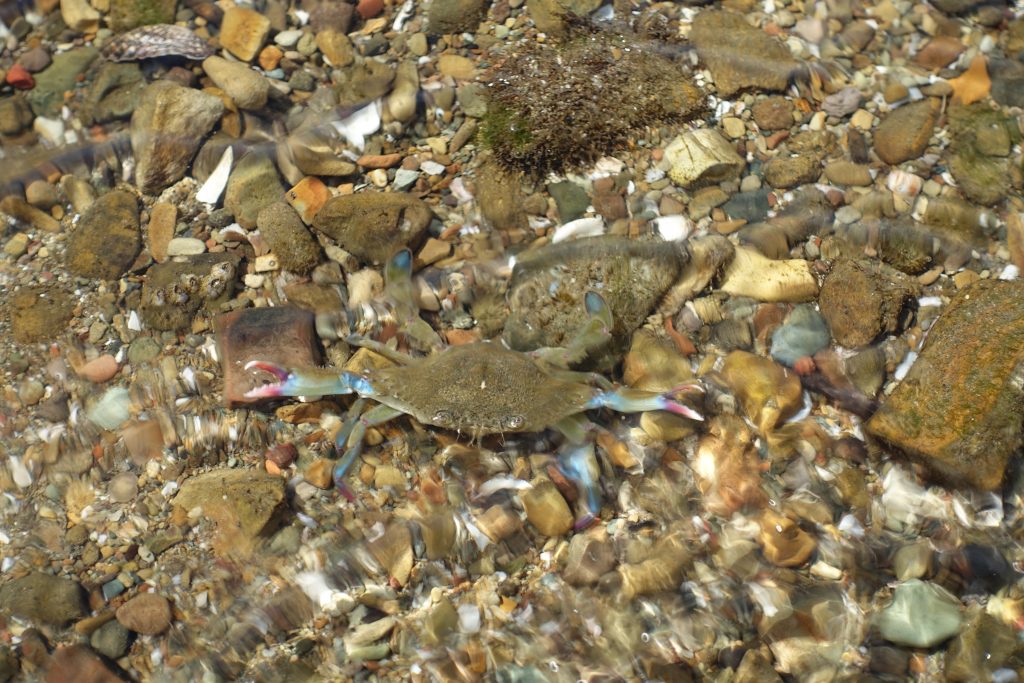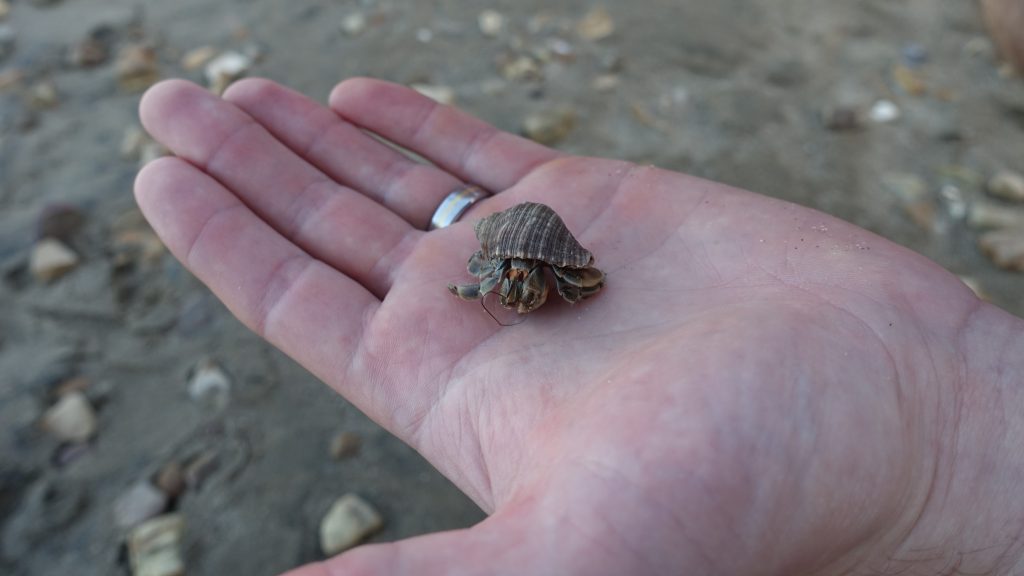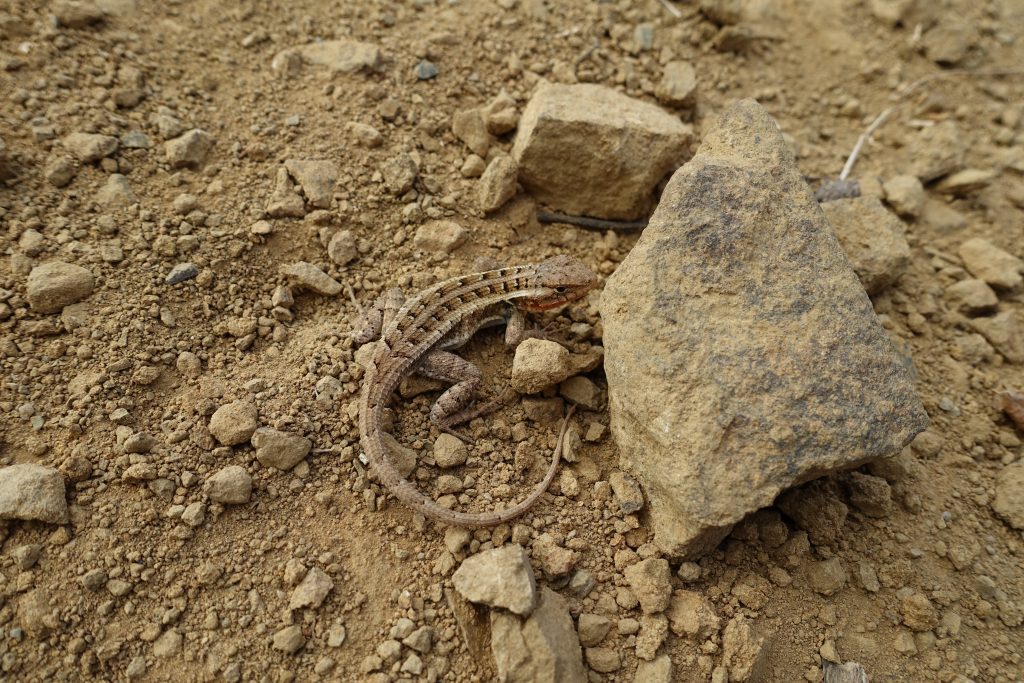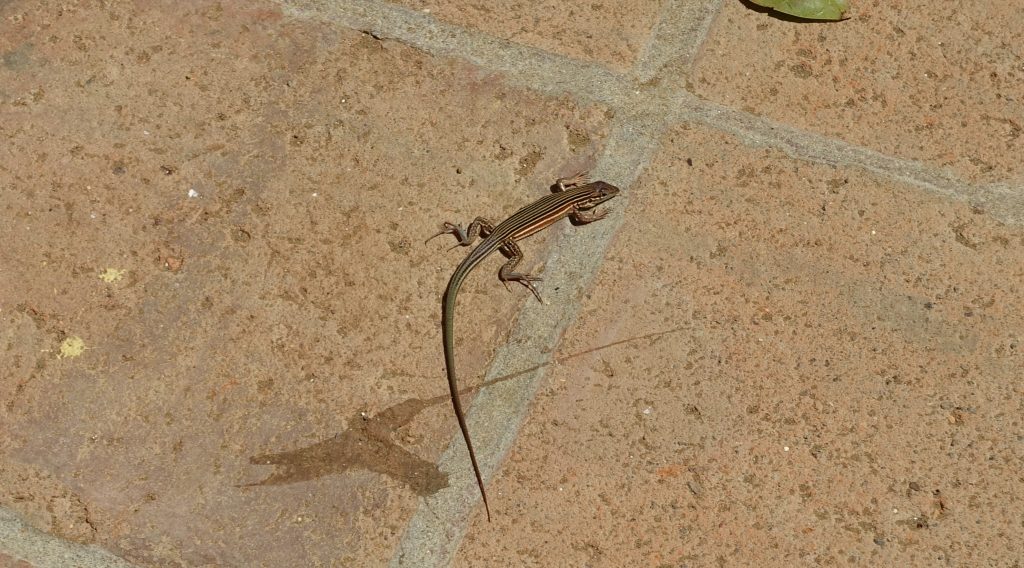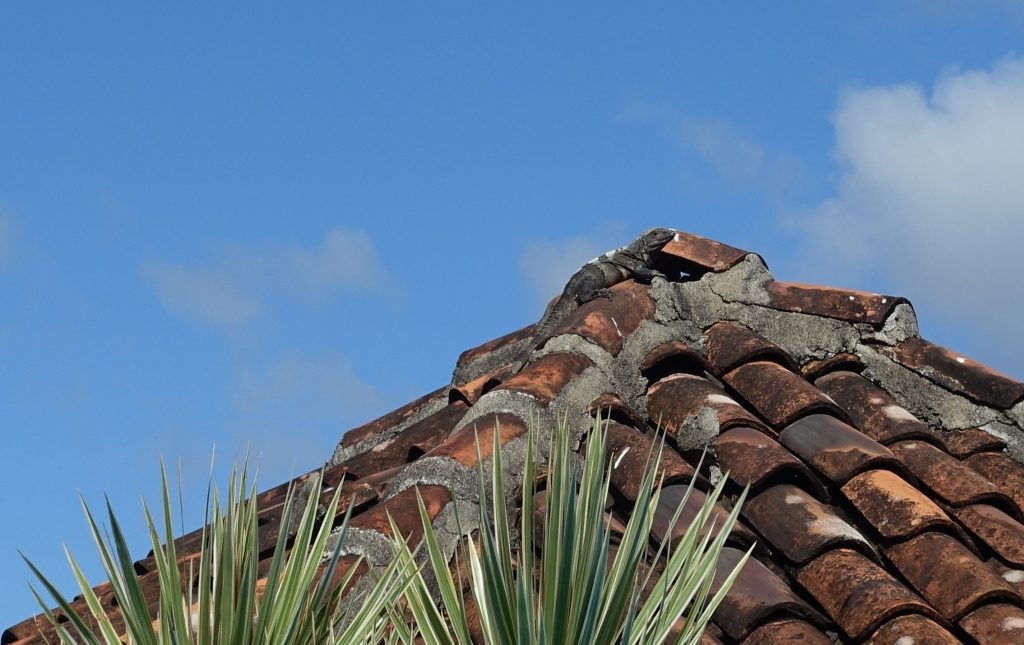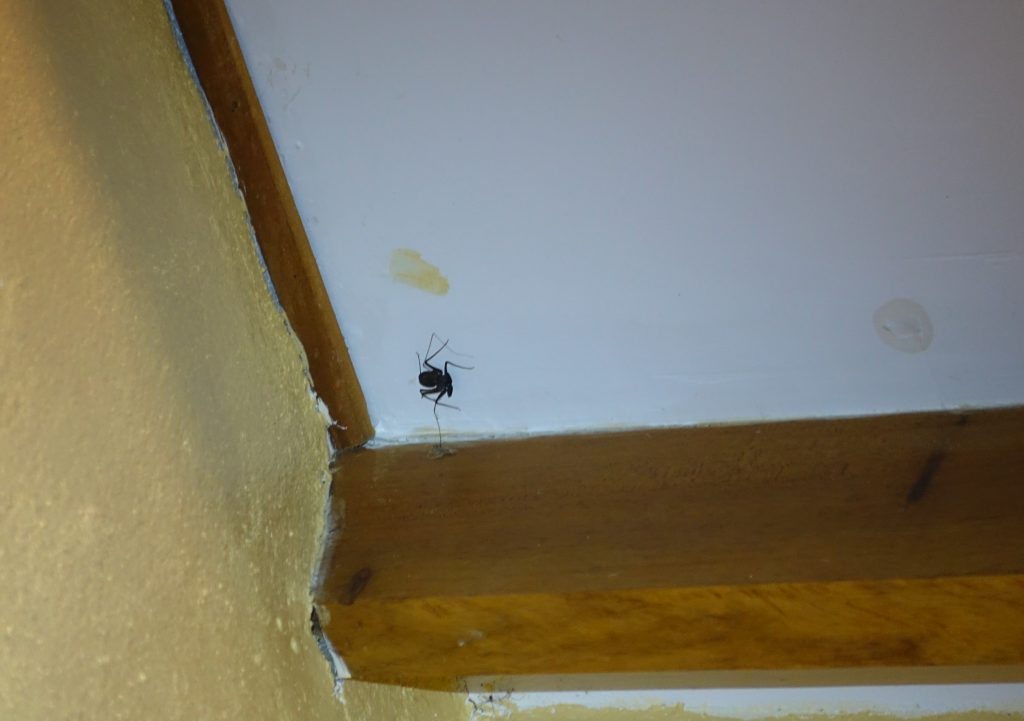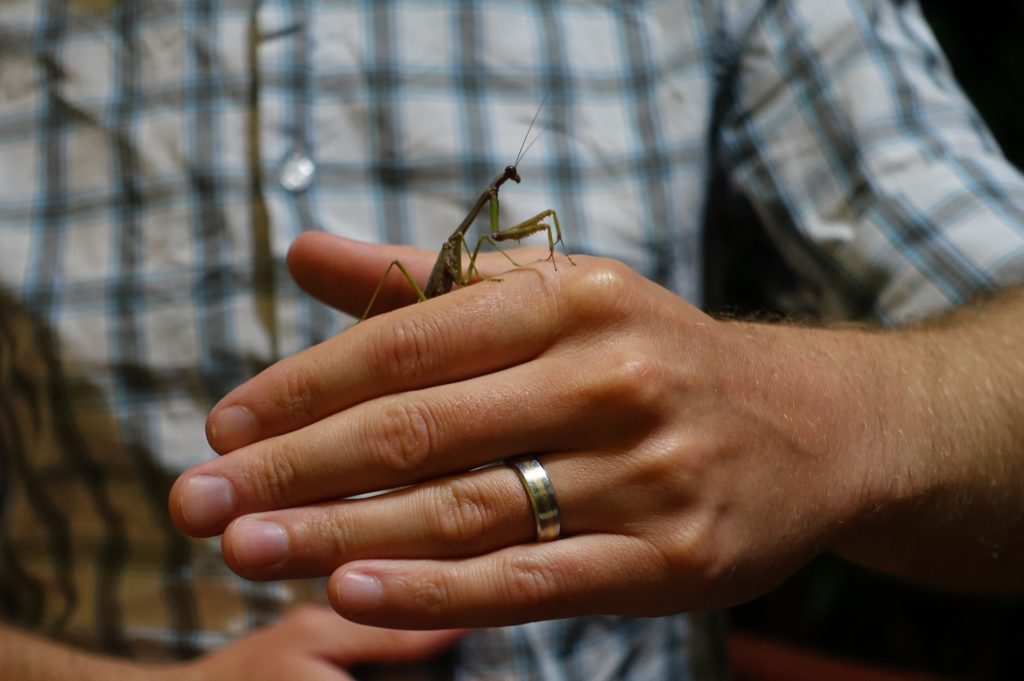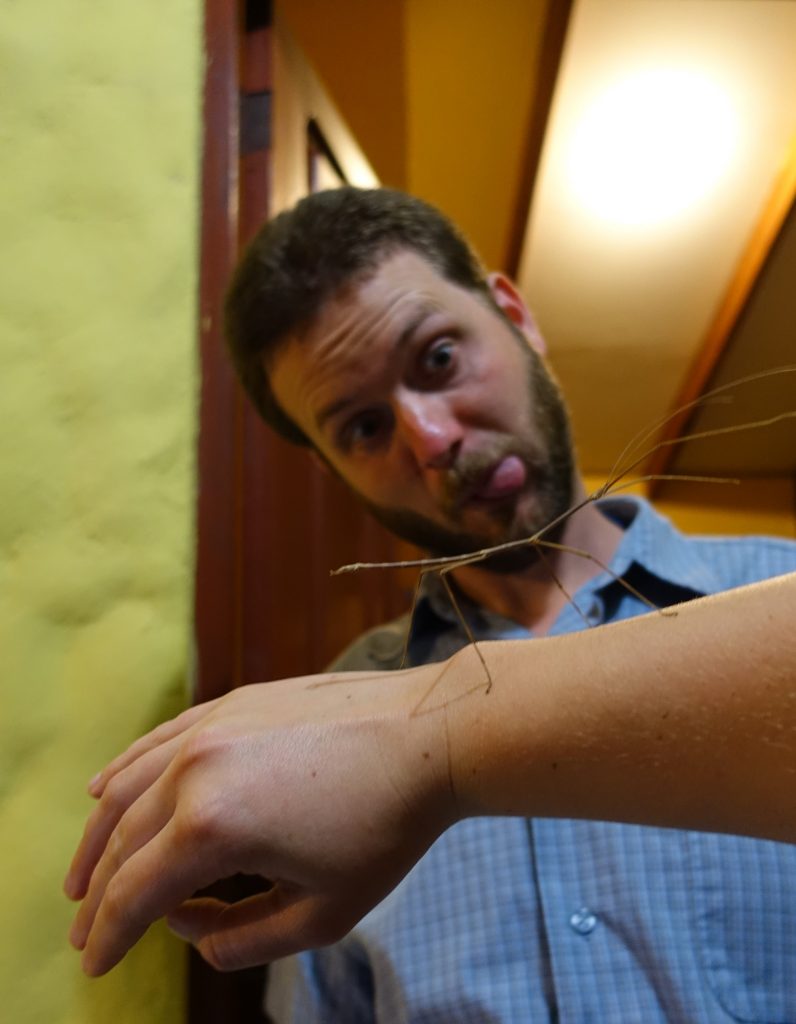I thought I’d end my series of Monteverde posts by writing a little bit about where Elani and I stayed for the last five days there. It was a little place we found on AirBnB called Cabinas la Montana. A wonderful local family had built three little cabins on their property, and it was somewhere on the spectrum between a bed and breakfast and a homestay. Usually, I’m not too invested in where I’m staying while traveling. It’s a place to sleep, maybe do a little writing or reading, and sometimes cook. Nowadays, it needs Internet and a workspace for Elani. As long as it has the stuff we need, I don’t think much more about it. But this place ended up being one of my favorite parts of the trip.
The cabins were a bit out of town, about a half an hour walk or a $3 cab ride, and at the end of a full day, we pretty much always took the cab ride. It was set off from the road in a nice chunk of forest, with several paths to explore on the rare days when we had free time during daylight. It wasn’t quite the stunning lush greenery of the nature reserves, but it was fun to explore nonetheless. There was a pretty amazing ficus tree:
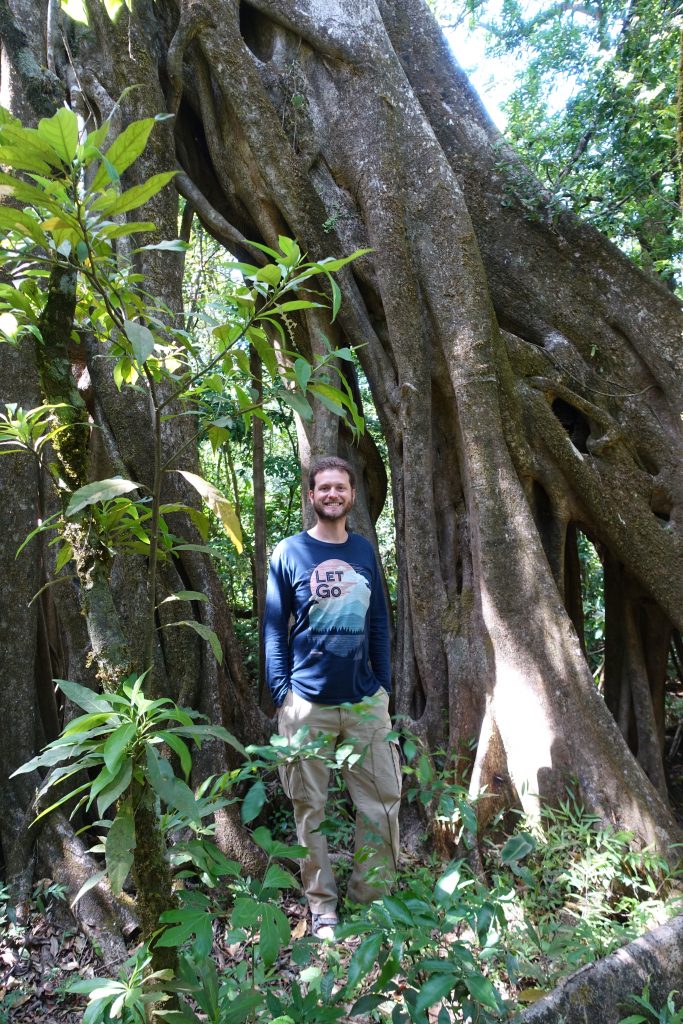
Taken by Elani
And hosts of leaf cutter ants making lines all through the forest as they carried leaves back to their hives:
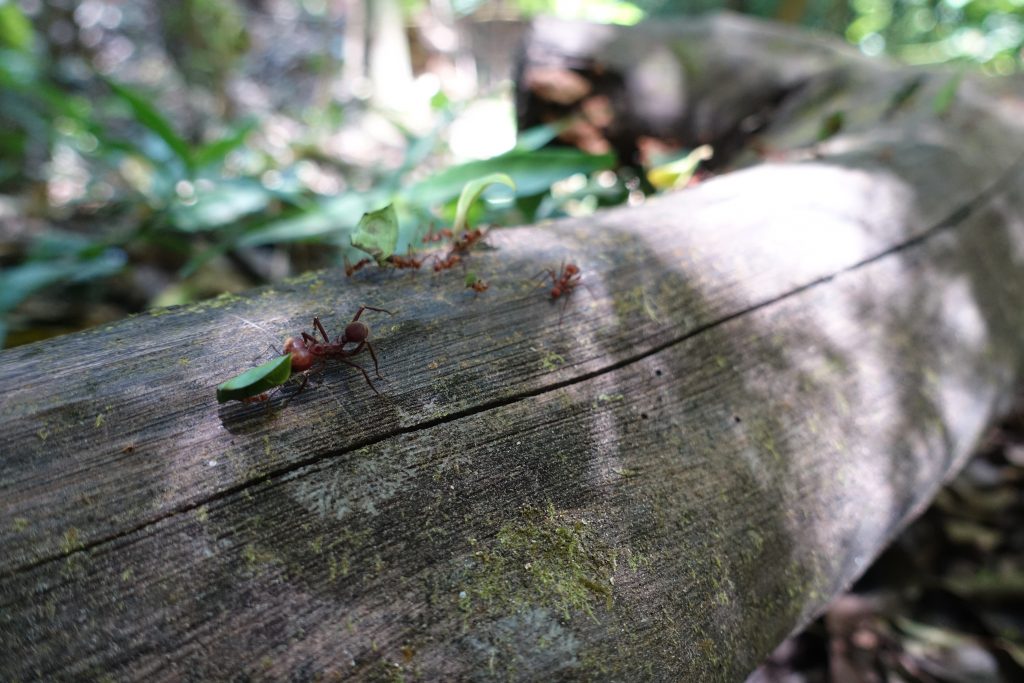
Taken by Elani
The most impressive animal sightings we had were the birds. They had figured out that after breakfast, there would pretty much always be fresh fruit scraps added to the compost pile. That meant that we got great views of the little emerald toucans almost every day, and some motmots made an appearance one day as well:
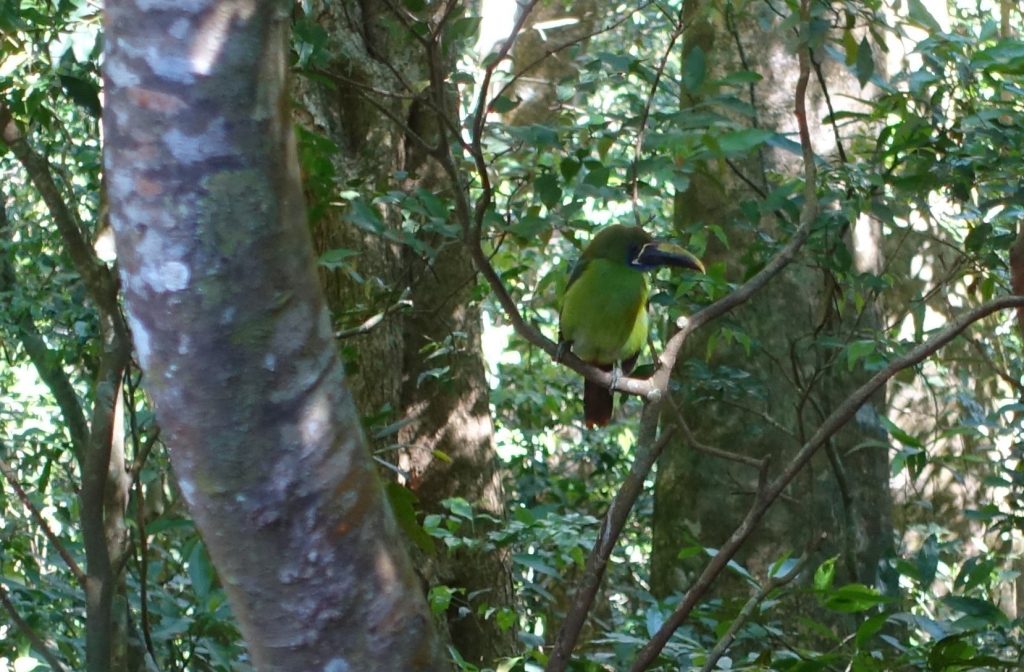
Take by Elani
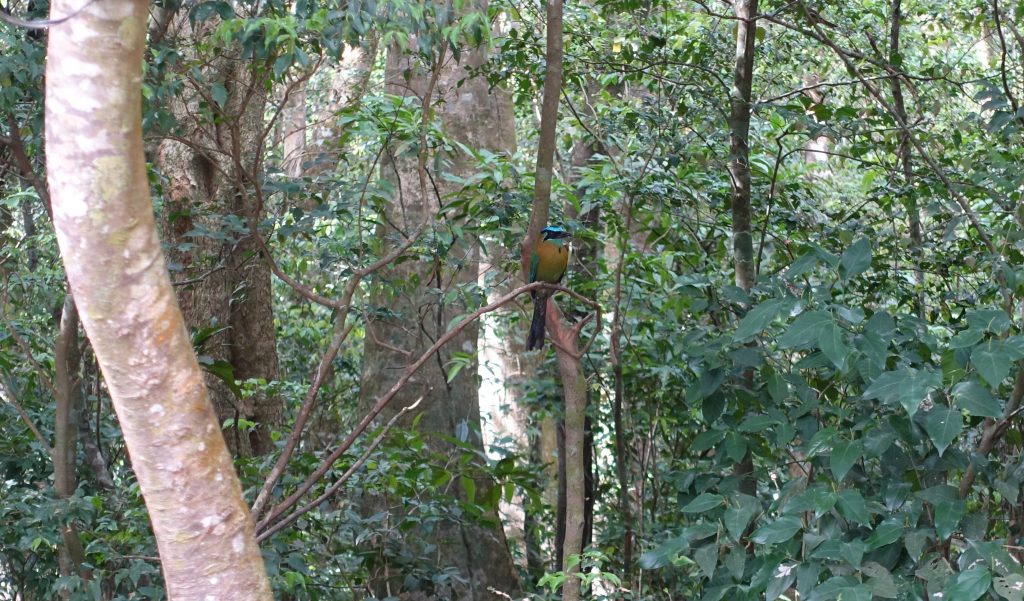
Taken by Elani
But the things that really made our stay a memorable experience was the time spent with the other guests and our host family. The day started out at with breakfast, which was a great home cooked spread of coffee, fresh fruit, sausage, plantains, eggs, pancakes, and gallo pinto. Gallo pinto is a mix of beans and rice, and it’s in pretty much every Costa Rican breakfast. It’s usually just the sum of its parts, but Terri’s (the mother of the host family) gallo pinto was above and beyond, and I was excited to eat it every morning. This was also a great time to talk to the other guests, a Germany couple traveling with their 4-year-old and a nice middle-aged American couple. All of them were great folks, and it was fun to compare our adventures around the Monteverde area. Our host family was amazing. They did an excellent job of making staying there more like a homestay then a hotel, while still giving us a private cabin to retreat to at the end of the day (that’s a very nice feature if you’re an introvert like me). As I mentioned, Terri was the mother of the family. While everyone pitched in and were very helpful and friendly, Terri took on most of the running of the bed and breakfast, so she was the one me an Elani got to know best. She was also one of the most mom-ish moms I’ve ever met. Her daughter described her mothering as “extra”, which was said with a fair amount of teenage exasperation, but was apt none the less. She cooked a hearty breakfast every morning, put up with Elani’s limited and my even more limited Spanish, helped us navigate Costa Rican transportation, did a load of laundry and refused money for it, tried (unsuccessfully) to pay us for moving some computer files around for her, took a morning to teach us the secrets of cooking her amazing gello pinto, and was just generally kind and caring towards us. When we left, Elani said she almost teared up. I of course didn’t, why would you even think that (sniff).
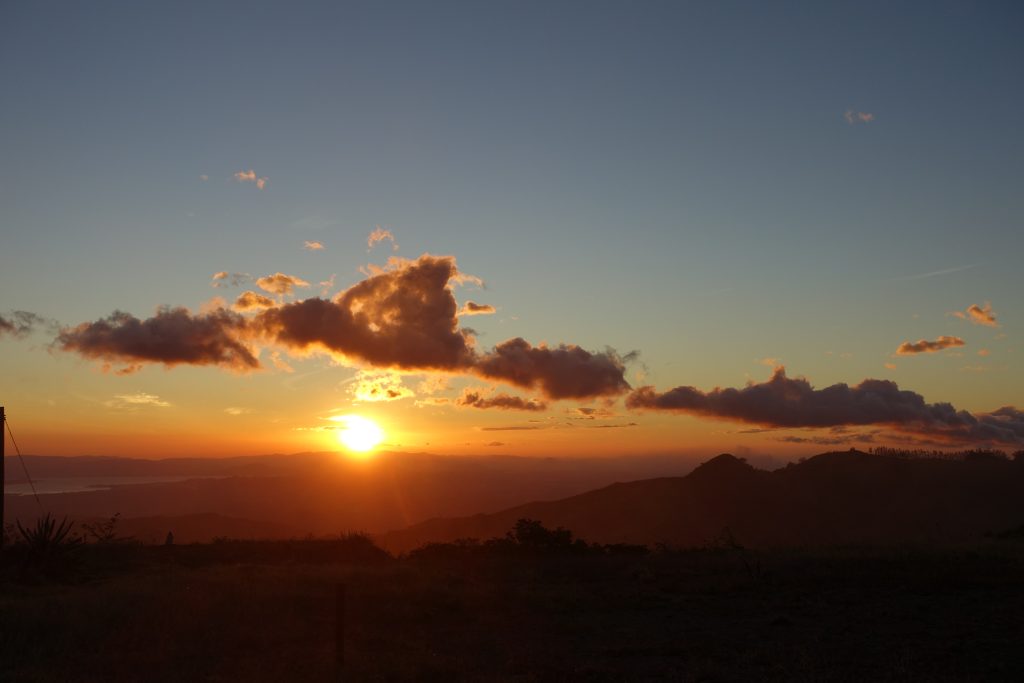
Taken by Elani
